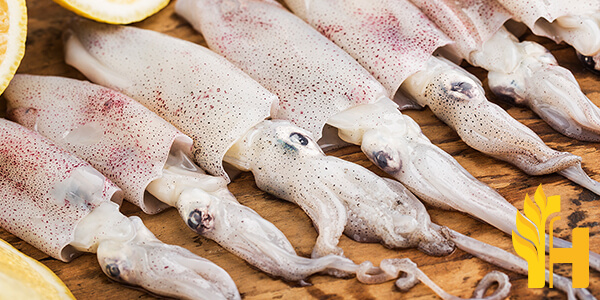Squid price

Where to buy and sell Squid, lowest (cheapest) and highest price.
check offers buy sell SquidToday price for SquidSquid wholesale prices 2022
The Current commodity price of Squid per kg, pound in the world in the global markets
flying or frozen calmar ring
Price range: 4.5 - 9.25 EUR / 1 kg | Market: Mercamadrid | Date: 2025-12-04
flying or frozen calmar ring
Price range: 4.25 - 8 EUR / 1 kg | Market: Mercamadrid | Date: 2025-11-24
Squid
Squid are cephalopods in the superorder Decapodiformes with elongated bodies, large eyes, eight arms, and two tentacles. Like all other cephalopods, squid has a distinct head, bilateral symmetry, and a mantle. Squid are rapid swimmers, moving by jet propulsion, and largely locate their prey by sight. Squid are cephalopods in the superorder Decapodiformes with elongated bodies, large eyes, eight arms, and two tentacles. Like all other cephalopods, squid has a distinct head, bilateral symmetry, and a mantle. Squid are distinguished by their enlarged ends of the body used for jet propulsion by water expulsion. The ends of the arms and tentacles are lined with suckers, but these have lost their ancestral function of catching prey in some species. An adult squid has ten arms arranged in two rows of five on either side of its body, and two long tentacles that can be up to twice as long as an arm span. Many squid species, such as the Humboldt squid, can discard some of their arms. Like all cephalopods, squid use organs known as statocysts (balance organs) to keep upright and in their proper habitat. Squid is equipped with two highly developed eyes sensitive to light and color. The eyes include hard lenses, corneas, and retinas. Squid can thus form a clear image of objects with great detail. Beyond these simple eyes, squid has complex photoreceptive cells that can distinguish between different wavelengths of light as well as polarized light. These photoreceptors give the squid an acute sense of vision at their disposal. However, they are not very useful when out of the water, because salt water is so much denser than air. Squid are also able to perceive the polarization of light with these photoreceptors, making it possible to orient themselves in the ocean or navigate through cloudy waters. Squid have eight arms arranged in pairs and two longer tentacles that cross over their mouth-ventral sides. The arms and tentacles of the squid are attached to muscular bands along their body which keeps them rigid and is similar to a skeleton. Squid move by either swimming with their fins, crawling with their arms and tentacles, or "walking" along the sea bottom using their arms and tentacles, this last way being most common among octopus species.Global squid production
The global production of squid has been on the decline in recent years. This is due to overfishing and the depletion of squid stocks in many parts of the world. As a result, the price of squid has been rising, making it more difficult for consumers to afford it. In addition, climate change is also believed to be playing a role in the decline of squid populations. Warmer ocean temperatures are thought to be affecting the reproduction and growth rates of squid, as well as their migration patterns. As a result, many fisheries that once relied on squid are now struggling to stay afloat. The decline in global squid production has had a ripple effect on the economy and has led to job losses in the fishing industry. In addition, it has also put pressure on other industries that use squid as a raw material, such as the food processing and canning industries. The future of squid production is uncertain, but it is clear that action needs to be taken in order to protect this important resource. Governments and organizations around the world are working to establish better management practices in order to ensure that squid stocks are sustainable. In addition, research is being conducted into the effects of climate change on squid populations in order to develop strategies to protect them in the future. Squid is an important part of the global food supply and its decline has serious implications for the economy and for the environment. It is essential that we take action to protect this valuable resource.Download our new
Husfarm App
Stay up to date with the current prieces of agricultural products all over the world.
Do you want to sell agricultural products?
Are you an Agricultural processor looking for high-quality products to buy?
Post an ad for FREE!
